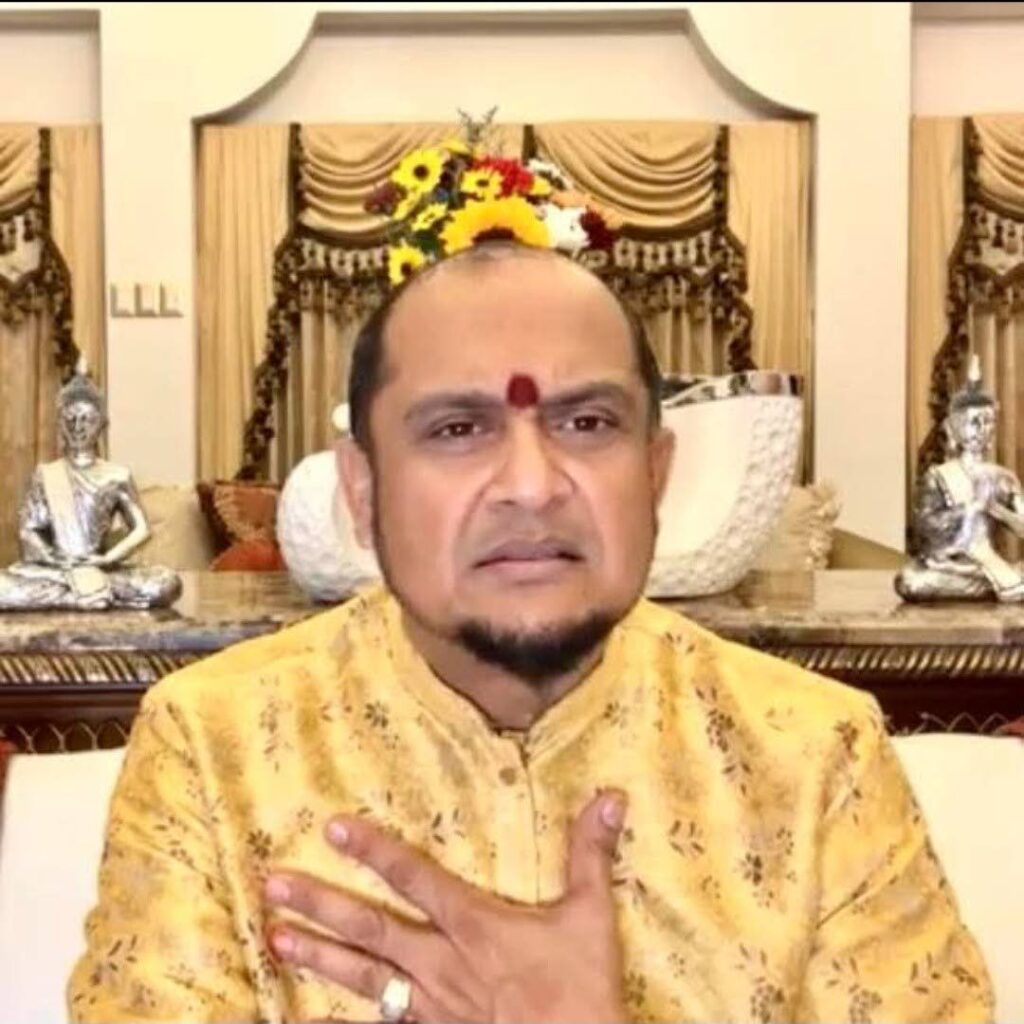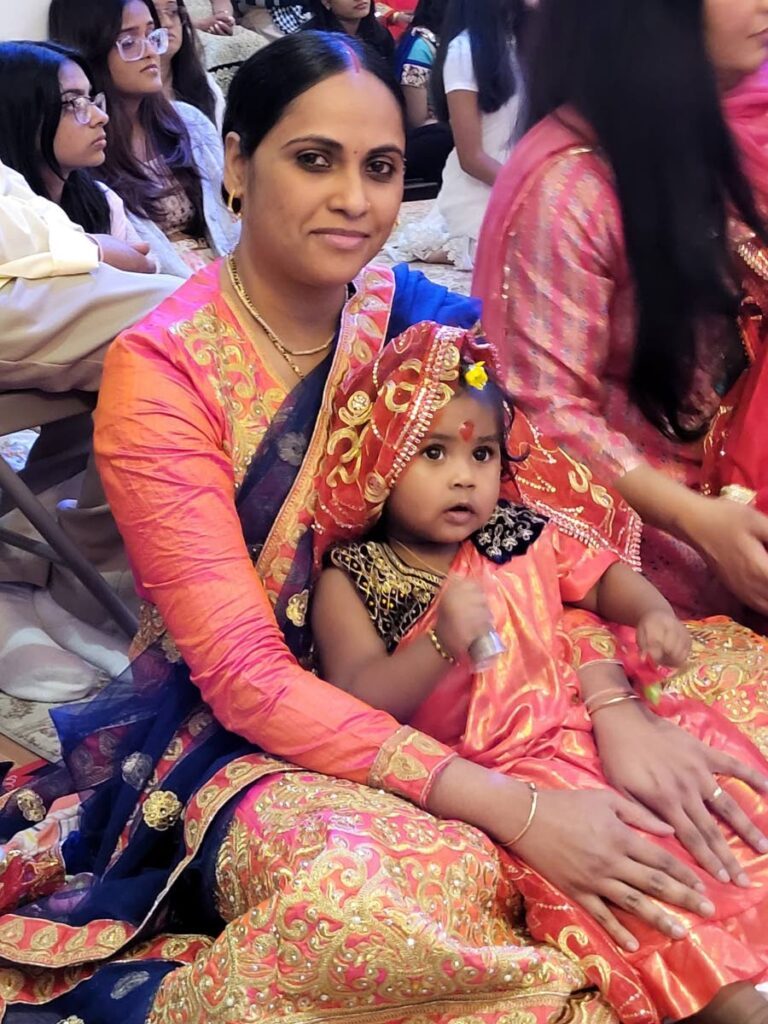Navratri and symbolic Kanya Kumari puja

BAVINA SOOKDEO
The Hindu community will celebrate Navratri, a sacred period dedicated to the worship of the
devi, the female divine energy, from March 29.
Pundit Lutchmidath Persad Maharaj explained the significance of Navratri and the deeply symbolic Kanya Kumari Puja which is a part of the worship done within this period.
Persad Maharaj, 51, of Todd’s Road, Chaguanas, is a practising pundit for over 35 years and served for 30 years on the executive of the Sanatan Dharma Maha Sabha. He is a former vice president to the Inter-religious Organisation.
Navaratri refers to a period of nine lunar days or nine nights. “This period is dedicated to the worship of the female form/the female concept or the female iconography of that divine, universal supreme that we refer to as God,” Persad Maharaj said in an interview with Newsday.
He said there are two Navratris observed annually: Chaitra Navratri in March-April and Sharad Navratri, which usually precedes Divali, in August, September or October.
“The Hindu year begins on the first day of the Navaratri and so, as per Hindu tradition and theology, Hindus are given nine days in which we begin the Hindu New Year with fasting, maintaining discipline and by performing rituals and pujas.”
Navratri is divided into three phases of three days each, with each segment dedicated to a different manifestation of the goddess.
“The first three days of the Navaratri, devotees focus on the worship of the Goddess Mother in her form as Durga Mata.
“Durga is believed to be the Goddess who protects, destroys evils, guards and safeguards her children against the many negative and destructive forces of the world. Puja (prayer ceremony) is performed and worship is done to her, seeking guidance, safety and security in going forward, in ensuring that the year brings every opportunity for providing safety, security and protection against all calamities, misfortunes and disasters.”

For the second three days of Navratri, the Goddess Mother is worshipped in the principle of Lakshmi or the goddess of wealth and good fortune.
“Goddess Lakshmi is one of the most popular icons of the female form of God and so devotees pray to her during the second three days of the Navaratri for a progressive, positive, powerful and prosperous year ahead.”
On the last three days of Navratri, the goddess is worshipped in the icon of Mother Saraswati, for those seeking wisdom and intellectual prowess.
“Many persons pursuing academia, in particular children who are attending schools and universities, would capitalise on the last three days of Navratri, focusing their devotion and worship to this form of the mother that inspires intellectual prowess and allows for the ability to be focused, disciplined and achieve success in all fields of education, music and the arts.”
Significance of Kanya Kumari Puja
A pivotal feature in the worship of the goddess during Navratri is the Kanya Kumari Puja, a special ceremony that honours nine young girls aged two to 11.
“It is a very significant puja as it allows many important fundamentals to be identified, worshipped and revered. The Kanya Kumari Puja would see the selection, preparation and honouring of nine little girls by dressing them in beautiful clothing, washing their feet and performing puja or honouring them by placing the
tilak/chandan (mark/dot smeared on the centre of the forehead with sandal paste) on their foreheads, bedecking them with jewellery, malas and garlands, honouring them by performing
aarti (the ritualistic waving of the sacred light), feeding them with sweets and presenting them with many gifts.”
As for its symbolism: “Firstly, and very importantly, it allows the devotee to pay respect to the Goddess Mother in the form and in the nine principles that allows the individual to strive for perfection.”
One of the
devi/kanyas will be referred to as
Kalyani Devi. The term
kalyani comes from
kalyan which means long life.
“So one of the
devis in the
Kanya puja is worshipped in order to bless the devotee, seeking that blessing through the performance of that puja with the gift of long life.
“One of the other
devis is referred to as
Vijayanti Devior Vijaya Devi – the term
vijaya comes from
vijay which means victory, achievement and accomplishment. That particular
devi bestows the blessings of success and good fortune in all undertakings and in all deliberations.”
Another
devi worshipped in the
Kanya puja is called
Trimurti Devi – representing three very important principles of fundamental pillars of Hinduism or
Sanatan Dharma – Dharma, the following of the righteous path;
artha, or the acquisition of material wealth that lends to the achievement and the enjoyment of legitimate pleasures and the third, fulfillment of desires. That is to be able to enjoy in life those things that would facilitate happiness, fulfillment, prosperity and good fortune.
“Each of the nine forms of the
devi offers a specific boon, blessing, or benediction.”
What is the
Kanya Kumari puja’s relevance in modern society?
It plays a crucial role in promoting the recognition of female energy and potential in society, Persad Maharaj said.
“At a time when there is so much call for equality and the rights of women, the Kumari Puja allows society to really honour the significance and the importance of the role and the function of female. In fact, Hinduism says,
Yatra naari, pujanti mahi – in any society that respects, honours and elevates women, that society will always prosper. Where women are respected, honoured, and revered, there will always be success, there will always be prosperity, and there will always be good fortune.”
Selecting prepubescent girls for this ritual is also symbolic.

“It is believed that these young girls, before they reach the age of puberty are very pure, energetic and their potential is endless indeed. It is believed that the minute the young girl reaches that age of development/puberty, her energies start to be channelled in all different directions. She becomes very emotional and in tune with different faculties of the senses. So, at this age, before puberty, she is pure, divine, her energies are all purified and sanctified and so that potential to be able to give that blessing is at its highest and this is why the
devi is worshipped in this form of innocence and sincerity – in this highest form of purity as
kanyas.”
Persad Maharaj said Navratri provides an opportunity to reflect on the past year and chart a course for the future.
Through prayer, fasting, and discipline, Hindus set a precedent for the coming year, “By beginning the year with devotion and discipline, we establish the principles necessary for a successful, productive, and prosperous year ahead.”

Comments
"Navratri and symbolic Kanya Kumari puja"